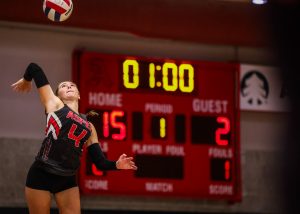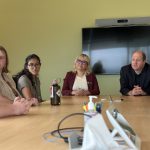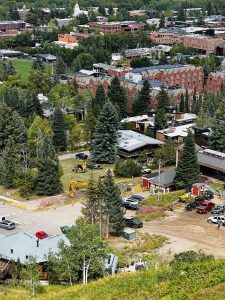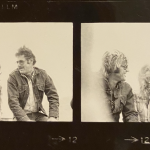‘We were face to face’: Aspen high schooler talks of surviving shark attack, establishing foundation for better life-saving kits

Kellie Carlson/Courtesy photo
Editor’s note: This article contains graphic images that may be disturbing to some.
If there is one word that springs to mind for those who have been around Aspen High School junior Annabelle Carlson for a while, it would be resilient.
This is especially so once hearing how she survived a shark attack at 15-years-old in August of last year.
“We were in Belize on a family trip,” Annabelle, now 16, began. “We woke at 6 in the morning to go on this boat with 10 other tourists, and we were all headed to the (Great) Blue Hole, which is about three hours off the Belize coast.”
The Great Blue Hole, once a cave before the oceans rose, is a famous diving destination known for its unique stalactite formations and depth and is over 100 meters deep, she said.
“So our dive group, we went down first,” she said. “We were at the bottom, we saw some sharks, saw some fish, which was cool.”
After her group finished, she and the others returned up to the boat. While waiting for the second group, she changed out of her wetsuit and joined her two younger siblings to jump off the boat into the water.
“Me and my siblings love to jump off boats, and I jumped off first,” Annabelle said.
The attack
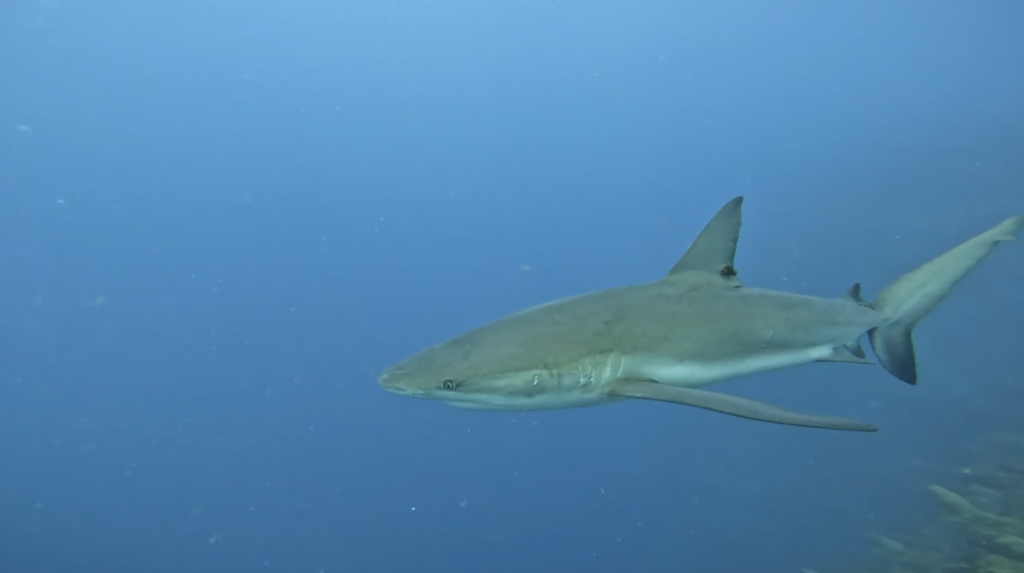
The second she hit the water, she said, the first reef shark swam out from under the boat and started biting her hands.
“My first instinct — I didn’t really know what was going on — but my survival instinct kicked in, and I tried to hit the shark wherever I could,” she said. “We were face to face.”
She had already been used to seeing sharks up close in a wide variety of destinations, which she described as “a really cool experience.” But the one attacking her was a whole new one.
Its aggression and motivation to bite her was shocking, she said.
“Even though I was in the water trying to fight it, I knew it was happening and knew I had to get out of there,” she said. “In ’48 meters Down’ and those types of movies, they always hit the shark in the eyes or the nose. I just remembered that and tried my best to hit it.”
Eventually, the shark finally gave up and swam away.
“I see blood in the water, so immediately thought, ‘I need to get out,'” she said. “I start swimming. They throw me a life ring, but I couldn’t really grab on to it, so I hooked it with my arm because my hands were damaged. They started pulling me in, and as they’re pulling me in, a second shark comes and bites my right leg.”
Those on the boat threw oxygen tanks at it, she recalled, trying to dislodge the thrashing shark, as it was still chewing up her leg.
“It was really chaotic,” she said.

Eventually, the shark gave up, and Annabelle was pulled up onto the boat, but her blood loss was severe — not only the leg wound, but also from the injuries to both her hands.
“The boat didn’t really have the right tools for lifesaving measures,” she said.
As luck would have it, though, two experienced tourist divers, one of whom was a trauma-trained SWAT officer, carried tourniquets in their buoyancy compensator devices and threw them both up onto the boat.
“At first, my brain didn’t calculate what was going on — nothing in the shark attack hurt,” she said. “This whole experience, it never hurt except the tourniquet because it was tied really tight. I think adrenalin saved me.”
Dr. Julia Sanders, an orthopedic surgeon at Children’s Hospital Colorado, has cared for Annabelle since she has been back in the state.
“Lack of pain at the moment is very common in trauma victims and is part of the body’s fight-or-flight response, which allows people to do ‘superhuman’ things, like fight off sharks!” she wrote in an email.
Then the three-hour boat ride back to the Belize coast began.
The boat ride to help
Partway into the ride, the crew realized there was an island about an hour and a half away. They were told a helicopter would be waiting there to fly Annabelle to the hospital.
However, once the boat reached the island, there was no helicopter — at least not for another 30-45 minutes.
“I really wanted to go to sleep,” she said. “I wasn’t realizing how extreme this situation was. I was just praying I’d make it out because a lot of times, throughout the whole experience when something would go wrong, a lot of people were screaming ‘She’s going to die!'”
Between the attacks and the wait, she said she had looked down at her leg a few times, seeing only bones from between her ankle to right below her knee. And all the blood.
“When I looked down at my leg, I knew it needed to be amputated,” she said. “There was no saving it.”
Her hands by this point were covered in gauze. She recalled how when she was being pulled up onto the boat how her fingers were “in all the wrong places, and my thumb was hanging on by a thread. I was just really hoping my hands would be okay.”
The helicopter, when it flew in, was not a medical helicopter — “it was more like a private, tourist helicopter,” she said.
There was only the pilot. No medical staff. All the seats had to be removed to fit the backboard she was laying upon.
After landing at a nearby hospital, the doctors performed an emergency amputation, she said. Then she was flown to a hospital in Miami, where she stayed for a month to recover.
She was finally discharged and returned home to Aspen. But, she said, a couple days later, she felt something was wrong with her leg.
“It was really red and hot,” she said.
She was driven to Aspen Valley Hospital before being moved to Children’s Hospital Colorado to treat a mycobacterial infection.
“These infections,” Dr. Sanders said, “typically originate from contaminated environments, such as ocean water, and are rare in healthy individuals. However, with severe tissue trauma like a shark bite, mycobacteria can penetrate the skin, muscle, and bone and spread.”
These infections are very hard to treat, she added. They often require multiple antibiotics and repeated surgeries to control and cure them.
“The infection never went away,” Annabelle said, “but it’s doing a lot better now. Definitely like a roller coaster — sometimes good, sometimes bad, sometimes really bad, which was a lot mentally and physically.”
The recovery
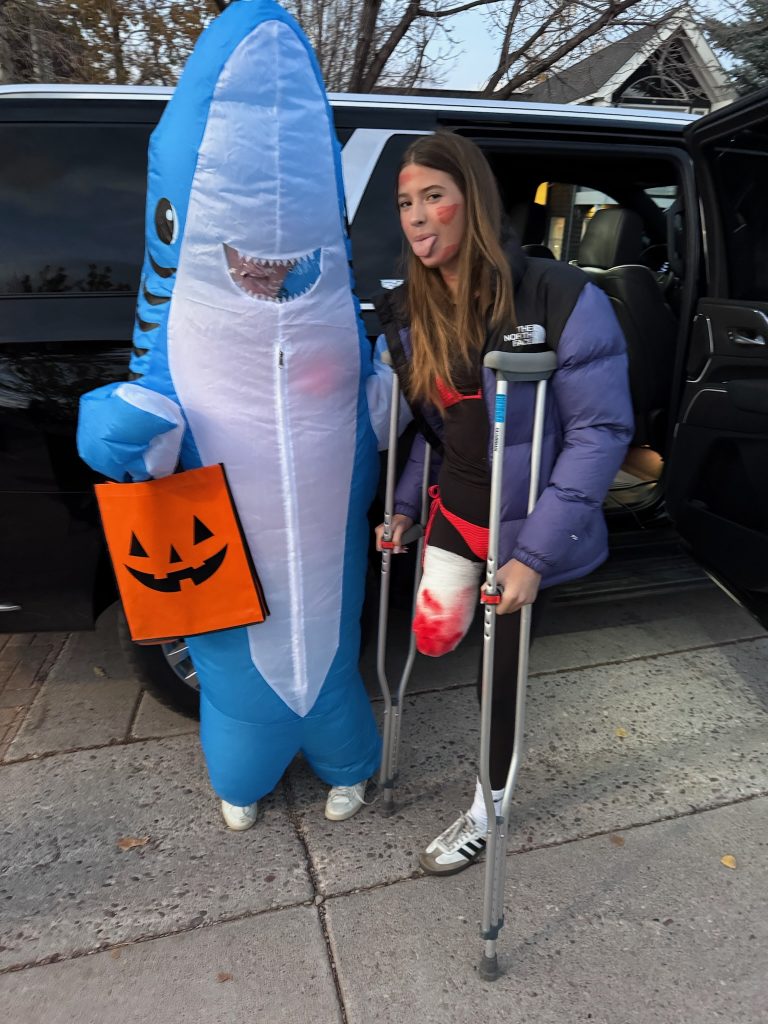
When she was at the hospital in Miami, she had about 2 to 3 surgeries on her hands, followed by a lot of hand exercises and wearing braces, she said. A couple of fingers on her right hand won’t straighten, but she hopes a surgery next month will address that.
Her leg recovery, on the other hand, has been more challenging, she said, since the decision for surgery is more “spur of the moment.” She said this is because if she notices something is wrong, then the doctor will bring her in.
“It just sucks that every time I have surgery, I’m not able to use my prosthetic for weeks. So I have to use crutches,” she said. “I’m still using one crutch (along with the prosthetic). … I can walk without a crutch, but I look a little weird.”
An avid skier before the shark attack, she spent this past ski season learning all over again but with the help from Challenge Aspen.

She was paired up with Olivia Niosi, whom Annabelle said “helped me through it and convinced me I could do it.
“I was a little discouraged,” she said. “I kept falling, and it was scary skiing on one leg. Seemed like I couldn’t stop myself. A lot of things were scary about it. Once I got the hang of it, it was upwards from there.”
Lindsay Cagley CEO of Challenge Aspen, remembers when Annabelle’s mom called her “pretty early on, long before it was time for her to try skiing. It sounded like they were both eager to get out there.
“Annabelle knew it was going to be hard, and it was hard,” Cagley said. “But she did it; she did great.”
She said that a lot of people don’t think through some of the challenges encountered on Day 1 — especially if they are already familiar with skiing: “How do you put the ski on if you are standing on one leg? Do you jump? Do you sit down? How are you going to get off the chairlift if you are on one leg and you are used to doing it with two?
“There’s new equipment, new ways to get tangled up,” she said. “It’s like doing the sport again for the first time for a lot of people.”
She said that in addition to the trauma itself, like losing a limb, there are a number of implications to consider, which are different for every individual: mental and physical health, expenses, stress, and life changes.
“It’s too easy for sports and athletics to fall to the wayside,” she said. “You get physical therapy, but getting to a point where you’re participating in the things that bring you joy and make you feel like yourself is so important.
“I think people in Colorado are more dependent on the outdoors for happiness — it’s just kind of who we are. It’s part of our culture, definitely in the Roaring Fork Valley.”
Dr. Sanders said she has been amazed by Annabelle’s recovery — considering how extensive her infection was and the severity of her injury — and how brave and resilient she has been throughout.
“She has maintained a positive attitude throughout this whole journey and is an inspiration to anyone going through trauma,” she added.
Throughout the whole ordeal, Annabelle has been thankful for all the people who saved her life, as well as those who have helped her throughout her recovery process.
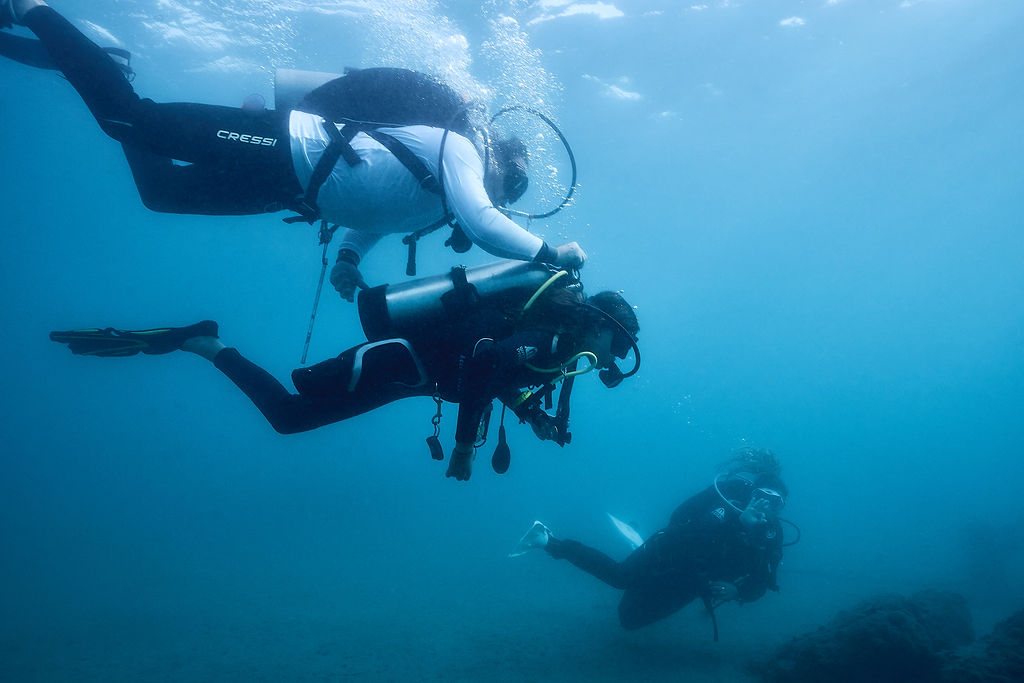
She said wants to start a new foundation, one that would provide first-aid kits, specifically with tourniquets, to camps, dive boats, and individuals. The foundation, which doesn’t have a name yet, would also provide scholarships to individuals 12 years old and up for CPR/first aid and tourniquet application.
“Our main goal would be to provide outreach on ocean safety and trauma preparedness,” she said. “We would hope to start at a national level and move to helping camps and dive operations in other countries.”
Since the shark attack last year, Annabelle has returned to the ocean, scuba diving in the waters off Palm Beach, which she said “felt really normal.
“I don’t know how you could ever stay away from the ocean. It’s so fun. I feel like I can’t stay away.”
Jonathan Bowers is the news editor for The Aspen Times. He can be reached at jbowers@aspentimes.com.
Preps: Aspen volleyball wins home opener; football teams fall on road
After having the weekend off, AHS volleyball next travels to Basalt on Tuesday night.
Aspen Mountain to be ‘fundamentally changed’ as construction starts near Lift One
Construction is slowly starting for the Chalet Alpina project near the original base of Lift One, bringing the resort “crafted from fables,” as its website puts it, one step closer to reality.

